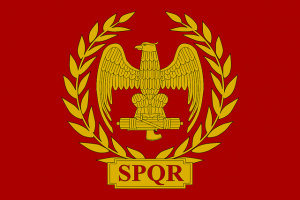Language/Latin/Vocabulary/Dining-and-Meals
| ◀️ Food Items — Previous Lesson | Next Lesson — Roman Gods and Goddesses ▶️ |
Welcome to our exciting lesson on "Dining and Meals" in Latin! This topic is not only essential for understanding Roman culture but also a delightful way to expand your vocabulary. Dining in Ancient Rome was an elaborate affair, often reflecting social status and cultural practices. As you embark on your journey to learn Latin, appreciating the nuances of dining and meals will enrich your understanding of the language and its speakers.
In this lesson, we will explore various aspects of dining, including meal times, table settings, and the etiquette surrounding meals. We'll also examine relevant vocabulary that will help you navigate conversations about food and dining with ease.
Here's what you can expect in today's lesson:
1. Introduction to Meal Times
2. Table Settings and Utensils
3. Dining Etiquette in Ancient Rome
4. Common Food-Related Vocabulary
5. Practice Exercises
Let’s dive into the world of dining and meals, and enrich our Latin vocabulary!
Meal Times
In Ancient Rome, meals were an integral part of social life. Understanding meal times will help you describe daily routines and social interactions.
Breakfast (Ientaculum)
- The first meal of the day, usually eaten in the morning.
Lunch (Prandium)
- A light meal taken in the early afternoon.
Dinner (Cena)
- The main meal of the day, typically served in the evening and often a lavish affair.
Here are some Latin terms related to meal times:
| Latin | Pronunciation | English |
|---|---|---|
| Ientaculum | [jɛnˈta.kʊ.lum] | Breakfast |
| Prandium | [ˈpran.di.um] | Lunch |
| Cena | [ˈke.na] | Dinner |
Table Settings and Utensils
Setting the table was an art form in Ancient Rome. Understanding the vocabulary related to table settings will enhance your dining conversations.
Common Utensils
- Patera: A shallow dish or plate.
- Cultrum: A knife used for cutting.
- Furca: A fork, though less common than today.
- Mensa: The table itself.
Here are some vocabulary terms for table settings:
| Latin | Pronunciation | English |
|---|---|---|
| Patera | [ˈpa.te.ra] | Plate |
| Cultrum | [ˈkul.trum] | Knife |
| Furca | [ˈfur.ka] | Fork |
| Mensa | [ˈmen.sa] | Table |
Dining Etiquette in Ancient Rome
Dining in Ancient Rome came with its own set of customs and etiquette. Here are some important points to consider:
- Reclining: Romans often reclined on couches while eating.
- Sharing: Meals were often communal, with dishes shared among guests.
- Conversation: Engaging in conversation was vital during meals.
Key terms related to etiquette include:
| Latin | Pronunciation | English |
|---|---|---|
| Convivium | [kɔnˈwi.vi.ʊm] | Feast or gathering |
| Invitare | [in.viˈta.re] | To invite |
| Gubernare | [ɡuˈber.na.re] | To manage (the meal) |
Common Food-Related Vocabulary
Let’s explore some essential food vocabulary that will be useful in your Latin conversations.
- Panis: Bread
- Caseus: Cheese
- Vin: Wine
- Fruits: Fructus
Here’s a table of common food items:
| Latin | Pronunciation | English |
|---|---|---|
| Panis | [ˈpa.nis] | Bread |
| Caseus | [ˈka.se.us] | Cheese |
| Vin | [win] | Wine |
| Fructus | [ˈfruc.tus] | Fruit |
Practice Exercises
To solidify your understanding of this lesson, here are some exercises.
Exercise 1: Match the Meal
Match the Latin words to their English translations.
| Latin | English |
|---|---|
| Ientaculum | ? |
| Prandium | ? |
| Cena | ? |
- Solutions:
1. Ientaculum - Breakfast
2. Prandium - Lunch
3. Cena - Dinner
Exercise 2: Fill in the Blanks
Complete the sentences with the correct Latin word.
1. I like to eat _____ (bread).
2. At dinner, we drink _____ (wine).
- Solutions:
1. Panem
2. Vinum
Exercise 3: True or False
Determine if the statements are true or false.
1. Cena is the breakfast meal. (False)
2. Romans used forks at every meal. (False)
Exercise 4: Vocabulary Quiz
Translate the following words into Latin.
1. Cheese
2. Table
3. Fruit
- Solutions:
1. Caseus
2. Mensa
3. Fructus
Exercise 5: Sentence Creation
Create a sentence using the Latin term "Convivia".
- Example Solution: "Convivia Romani sunt laeta." (Roman feasts are joyful.)
Exercise 6: Role Play
With a partner, role-play a dining scenario, incorporating at least five new vocabulary words.
- Solutions will vary based on student interaction.
Exercise 7: Table Setting Exercise
List the items needed to set a Roman table.
- Example Solution:
- Mensa
- Patera
- Cultrum
- Furca
Exercise 8: Etiquette Discussion
Discuss the importance of conversation during meals in Ancient Rome.
- Solutions will vary based on student discussion.
Exercise 9: Translate and Describe
Translate the following sentence into Latin: "We will dine together."
- Solution: "Cenabimus simul."
Exercise 10: Meal Plan
Plan a Roman meal using the vocabulary learned and write it down.
- Example Solution:
- Ientaculum: Panis et caseus
- Prandium: Fructus et vinum
- Cena: Cena cum convivis
Congratulations on completing this lesson on dining and meals in Latin! You’ve not only expanded your vocabulary but also gained insight into the rich cultural practices of Ancient Rome. Remember, practice makes perfect. Keep using these terms in your conversations, and soon, you'll find yourself navigating dining scenarios with ease!
Sources
- Latin/Food Lesson 2 - Wikiversity
- Latin Vocabulary - Food
- vocabulary - Breakfast, lunch, dinner? - Latin Language Stack ...
Other Lessons
- Family
- Camping
- People in Latin
- Words and Expressions Latin
- Drinks
- Dinner Table
- Animal
- Food Items
- Essential phrases
- Months Days Planets
| ◀️ Food Items — Previous Lesson | Next Lesson — Roman Gods and Goddesses ▶️ |

